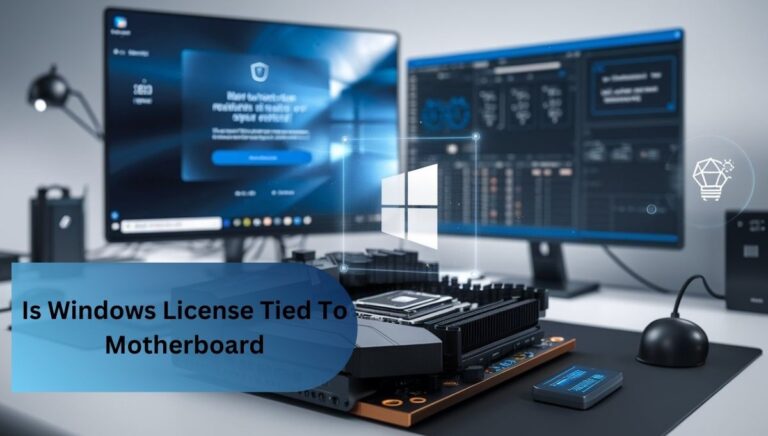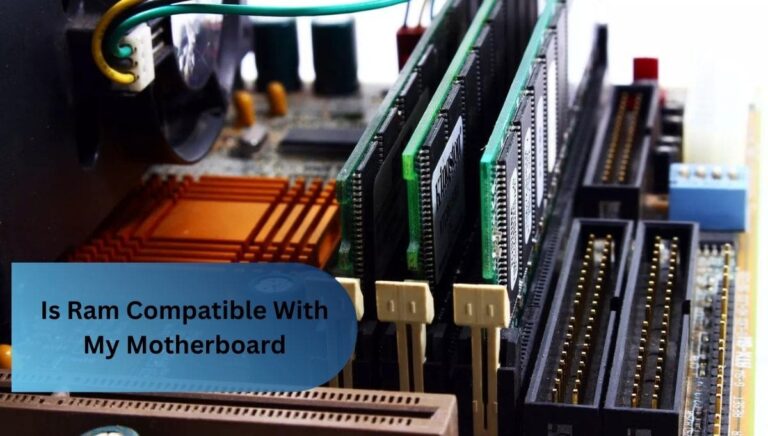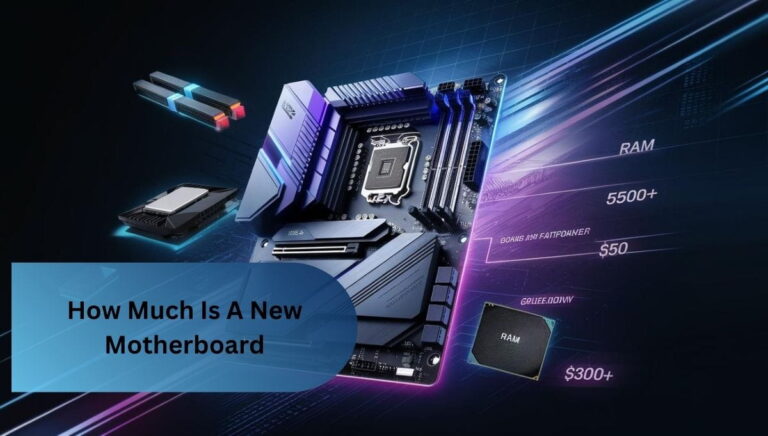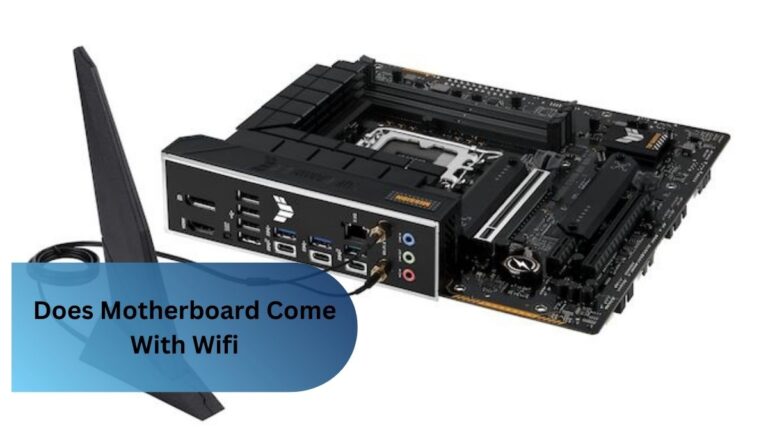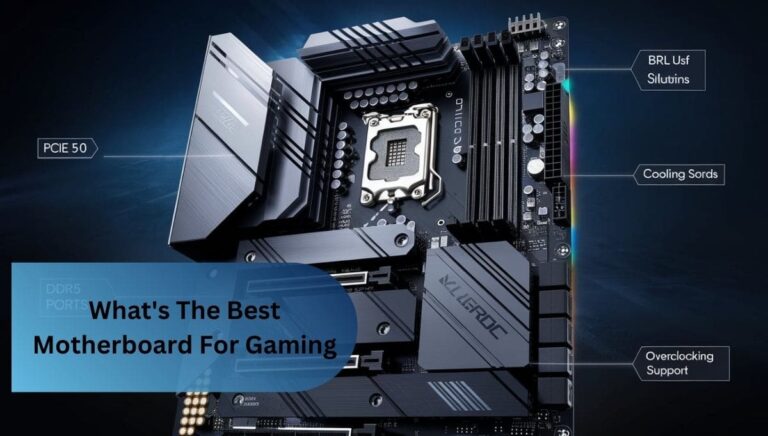What Memory Does My Motherboard Support – Take Analysis One By One!
When I wanted to upgrade my PC, I was curious about What Memory Does My Motherboard Support. I found the model number printed right on the board and checked the manufacturer’s website. It was eye-opening to see that my motherboard could handle faster RAM than I expected, which made my upgrade feel even more worthwhile!
To find out what memory your motherboard supports, look for the model number on the board and check the manufacturer’s website. This will tell you the type of RAM (like DDR4 or DDR5), the maximum capacity, and compatible speeds. It’s a simple way to make sure you get the right memory for your PC!
How Do I Check What Ram My Motherboard Supports?
To find out what memory your motherboard supports, start by checking the motherboard model number, which is usually printed on the board itself or can be found in your computer’s documentation. Once you have the model number, visit the manufacturer’s website and look for the specifications or support section for that model.
Here, you’ll find detailed information about the types of RAM compatible with your motherboard, including whether it supports DDR4 or DDR5, the maximum capacity it can handle, and the recommended RAM speeds.
Additionally, you can use tools like CPU-Z, a free program that gives you detailed information about your system, including memory specifications. With this knowledge, you can confidently upgrade or replace your RAM to enhance your computer’s performance!
Does my laptop take DDR4 or DDR5?

1. Check Laptop Specifications:
To find out what memory does my motherboard support start by checking your laptop’s specifications in the user manual or on the manufacturer’s website. Look for details about the RAM type, such as DDR4 or DDR5, along with the maximum capacity it can handle. This information will guide you in choosing the right upgrade for better performance.
2. Look for the Model Number:
- Find the model number on the bottom of your laptop or under the battery.
- You can also check the sticker on the laptop’s box or packaging.
- If you can’t find it, open the system settings or control panel to view the information.
- Write down the model number for easy reference when researching RAM compatibility.
3. Consult the Manufacturer’s Website:
To learn what memory does my motherboard support, visit the manufacturer’s website and look up your laptop model. They usually provide detailed specs that tell you if it uses DDR4 or DDR5 RAM. This way, you can be sure you’re choosing compatible memory for your laptop!
How Do I Match Ram To Motherboard?

To effectively match RAM to your motherboard, you need to consider several key factors to ensure compatibility. Start by identifying what memory does my motherboard support, such as DDR4 or DDR5, by checking the specifications on the manufacturer’s website. Next, look at the maximum RAM capacity your motherboard can handle, which is typically listed in gigabytes (GB). You should also pay attention to the speed of the RAM, measured in MHz, to find modules that match or exceed your motherboard’s requirements. Finally, consider the number of RAM slots available, as this will determine how many modules you can install and whether you can take advantage of dual-channel configurations for better performance.
1. Key Points to Consider:
- Memory Type: Check if your motherboard supports DDR4, DDR5, or another type.
- Maximum Capacity: Find out the total amount of RAM your motherboard can support.
- Speed: Look for RAM with a speed that matches or is higher than the motherboard’s specifications.
- Slots Available: Count the RAM slots on your motherboard to see how many sticks you can add.
- Brand Compatibility: While not critical, using the same brand and model can help with stability.
Corsair Ram Compatibility Checker
1. How to Use the Corsair RAM Compatibility Checker:
To use the Corsair RAM Compatibility Checker, start by selecting your motherboard brand and model to see what memory does my motherboard support. The tool will quickly display compatible RAM options based on your selections, helping you find the best match. This ensures you choose the right Corsair RAM that fits your needs and meets the specifications of what memory does my motherboard support.
2. Benefits of Using Corsair RAM Compatibility Checker:
- Easy to Use: The checker provides a simple interface that guides you through finding the right RAM for your system.
- Accurate Results: It shows precise compatibility information, ensuring you know what memory your motherboard supports.
- Wide Range of Options: You can explore various Corsair RAM models that fit your needs, from gaming to high-performance tasks.
- Time-Saving: Quickly narrowing down compatible RAM options helps you make informed decisions without extensive research.
- Expert Recommendations: Benefit from suggestions based on your specific motherboard, so you can upgrade with confidence.
How can I identify my RAM?

To identify your RAM, you can start by checking the physical memory modules in your computer. Open your desktop case or laptop back panel and look for the RAM sticks, which are long and slim with chips on one side. If you can’t access the hardware, you can also find RAM details through software tools.
Programs like CPU-Z or the built-in Task Manager on Windows will show you information about the type, speed, and size of your RAM. This way, you can easily know what you have and if it meets your needs for upgrades or replacements!
FAQ’s
1. Can I mix RAM brands?
Yes, you can mix RAM brands, but it’s best to use the same type and speed for the best performance. Different brands might work together, but they could cause stability issues or not run at their full potential. To ensure compatibility, try to use RAM with similar specifications, like timings and voltage, for a smoother experience.
2. How do I check my motherboard specs?
To check your motherboard specs, you can open your computer and look for the model number printed on the board itself. Alternatively, you can use software tools like CPU-Z or check your system information in Windows, which will provide detailed specs without opening your case.
3. What is the difference between dimm and so dimm?
DIMM (Dual In-line Memory Module) is used in desktops and has a larger size, while SO-DIMM (Small Outline DIMM) is smaller and designed for laptops. The main difference is their physical size and shape, making SO-DIMMs ideal for compact devices. Both serve the same purpose of providing RAM, but you’ll choose one based on your device type.
4. Are all DDR5 RAM compatible?
Not all DDR5 RAM is compatible with every motherboard, as each motherboard has specific requirements for RAM speed and timings. Always check your motherboard’s specifications to ensure the DDR5 RAM you choose will work properly.
5. Can I use any RAM for my PC?
You can’t use just any RAM for your PC; it must be compatible with your motherboard. Each motherboard has specific requirements for RAM type, speed, and capacity, so it’s important to check these details before buying new memory. Using the right RAM ensures your system runs smoothly and efficiently!
Conclusion:
Knowing what memory does my motherboard support is essential for upgrading your PC effectively. By checking your motherboard’s specifications, model number, and compatibility with RAM types, you can ensure you choose the right memory for optimal performance.
Taking these steps will help you enhance your system’s speed and efficiency, making your computing experience much better!

